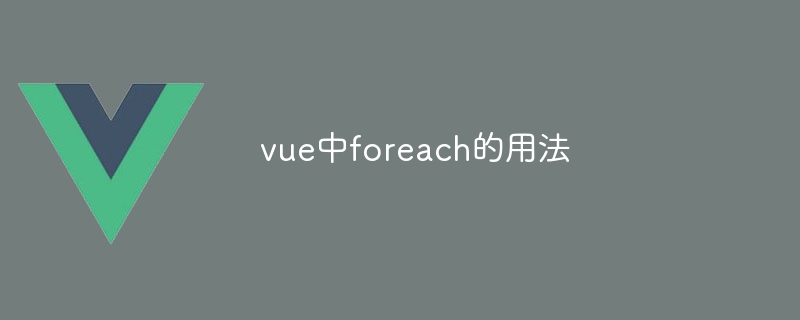
v-for directive is used to iterate over an array or object and create corresponding DOM elements for each element. When iterating over an array, the syntax is v-for="item in items", where item is an alias for the current element. When traversing an object, the syntax is v-for="(value, key) in object", where key and value are the key and value respectively. The v-for directive also supports other features such as :key, v-bind, v-if, and v-else.

The v-for directive in Vue.js
What is the v-for directive?
The v-for directive is a Vue.js built-in directive that iterates over an array or object and creates corresponding DOM elements for each element.
Syntax
<code class="vue"><template v-for="item in items">
{/* 对于每个元素渲染的内容 */}
</template></code>Among them:
item: The alias of the current element, which can be used in the loop body .
<li>
items: Array or object to be traversed.
Iterate over an array
To iterate over an array, you can use the following syntax:
<code class="vue"><ul>
<li v-for="item in items">{{ item }}</li>
</ul></code>This will create an array for each element in the array <li> element, and use the item alias to access the value of the current element.
Traversing Objects
To iterate over an object, you can use the following syntax:
<code class="vue"><div>
<p v-for="(value, key) in object">{{ `${key}: ${value}` }}</p>
</div></code>This will create a # for each key-value pair in the object ##
element and use the key and value aliases to access the key and value respectively.
Other features
The v-for directive also supports the following features:: used to specify The unique identifier of the element, which is crucial for Vue.js to optimize DOM operations.
<li>v-bind: Used to bind attributes or data to DOM elements.
<li>v-if: Used to render elements conditionally.
<li>v-else: Used to render elements when v-if is false.
The above is the detailed content of How to use foreach in vue. For more information, please follow other related articles on the PHP Chinese website!